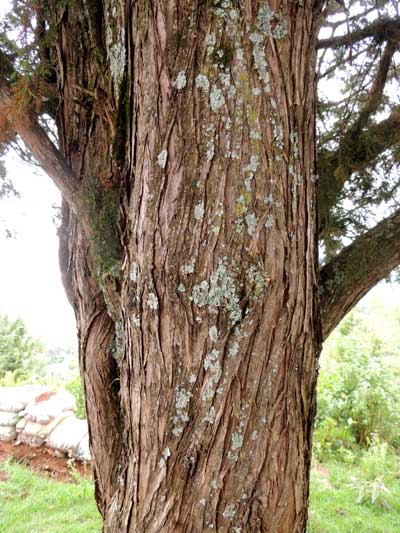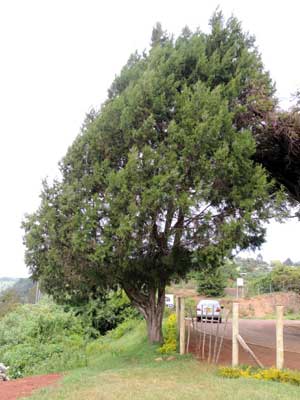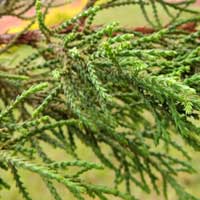African Juniper
Tarakwa
Juniperus procera

This tree on the Elgeyo Escarpment has escaped the axe by virtue of its location in the public rest area. Iten, Kenya. July 2014.
 From
Wikipedia: Known in English as African Juniper or East African Juniper,
is a coniferous tree native to the mountains of eastern Africa from eastern
Sudan south to Zimbabwe, and the southwest of the Arabian Peninsula. It is a
characteristic tree of the Afromontane flora, medium-sized, reaching
20-25 m (rarely 40 m) tall, with a trunk up to 1.5-2 m diameter and a broadly
conical to rounded or irregular crown. The leaves are of two forms, juvenile
needle-like leaves 8-15 mm long on seedlings, and adult scale-leaves 0.5-3 mm
long on older plants, arranged in decussate pairs or whorls of three. It is
largely dioecious with separate male and female plants, but some individual
plants produce both sexes. The cones are berry-like, 4-8 mm in diameter,
blue-black with a whitish waxy bloom, and contain 2-5 seeds; they are mature in
12-18 months. The male cones are 3-5 mm long, and shed their pollen in early
spring. It is the only juniper to occur south of the equator. It is closely
related to Juniperus excelsa from southwestern Asia, probably deriving from a
common ancestor with that species in southwestern Asia.
From
Wikipedia: Known in English as African Juniper or East African Juniper,
is a coniferous tree native to the mountains of eastern Africa from eastern
Sudan south to Zimbabwe, and the southwest of the Arabian Peninsula. It is a
characteristic tree of the Afromontane flora, medium-sized, reaching
20-25 m (rarely 40 m) tall, with a trunk up to 1.5-2 m diameter and a broadly
conical to rounded or irregular crown. The leaves are of two forms, juvenile
needle-like leaves 8-15 mm long on seedlings, and adult scale-leaves 0.5-3 mm
long on older plants, arranged in decussate pairs or whorls of three. It is
largely dioecious with separate male and female plants, but some individual
plants produce both sexes. The cones are berry-like, 4-8 mm in diameter,
blue-black with a whitish waxy bloom, and contain 2-5 seeds; they are mature in
12-18 months. The male cones are 3-5 mm long, and shed their pollen in early
spring. It is the only juniper to occur south of the equator. It is closely
related to Juniperus excelsa from southwestern Asia, probably deriving from a
common ancestor with that species in southwestern Asia.
Cupressaceae -- Cypress Family
More Information:
